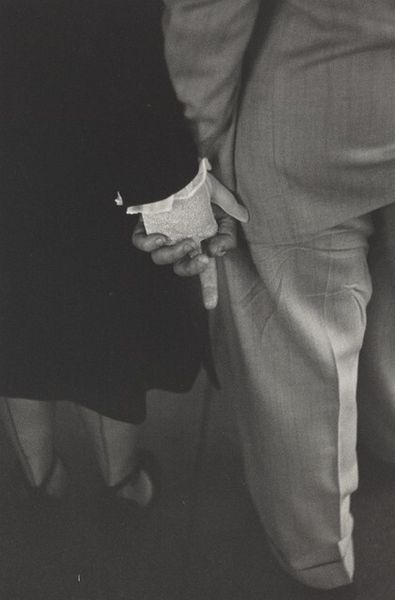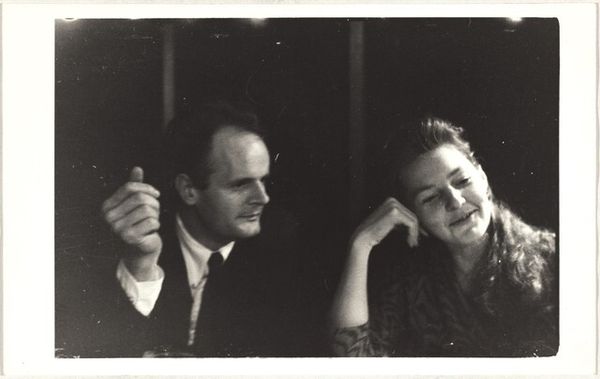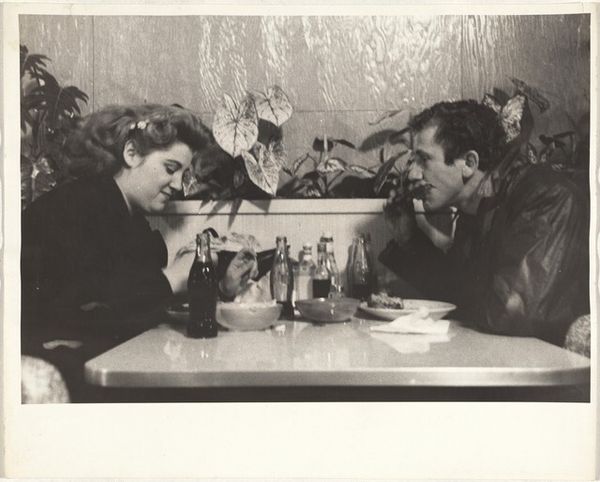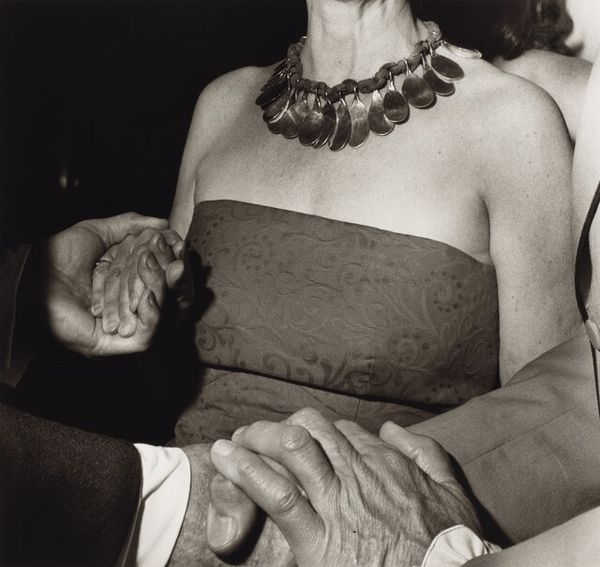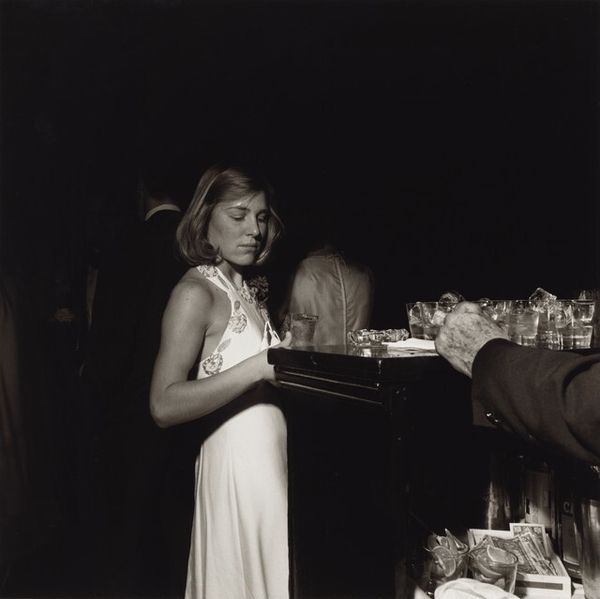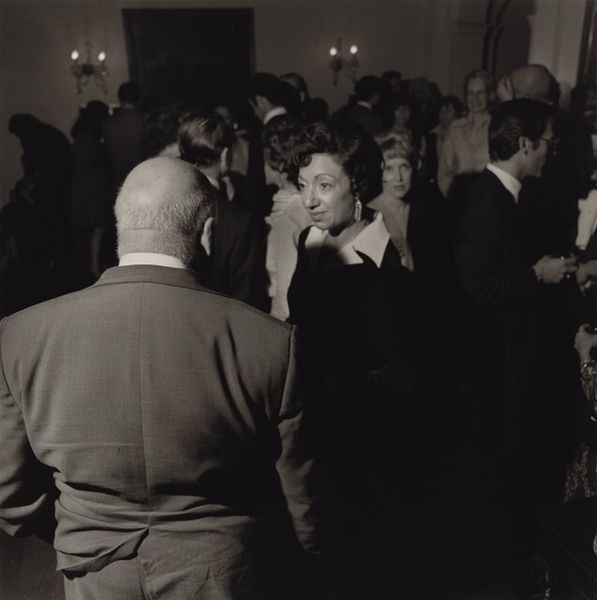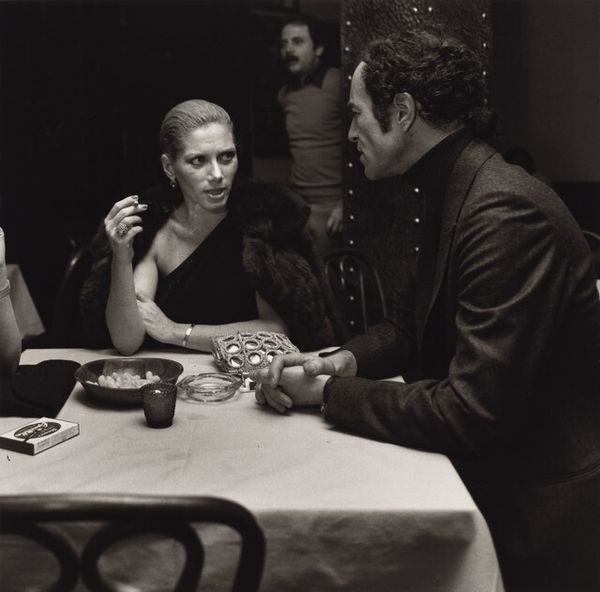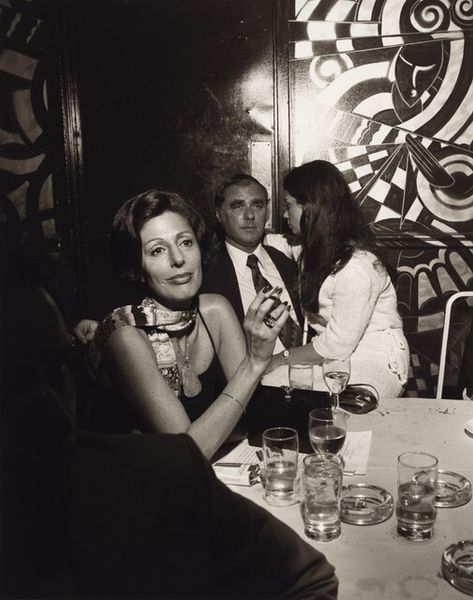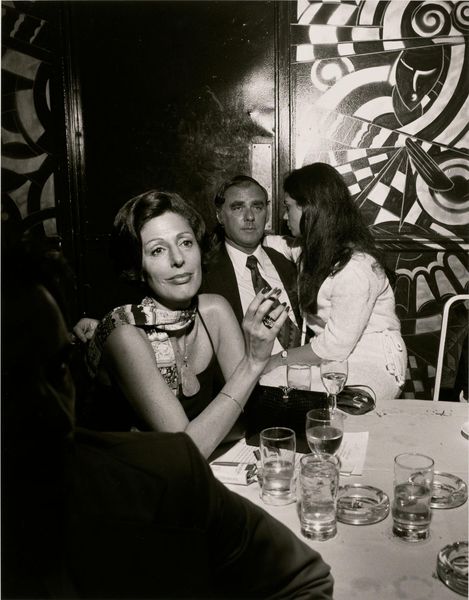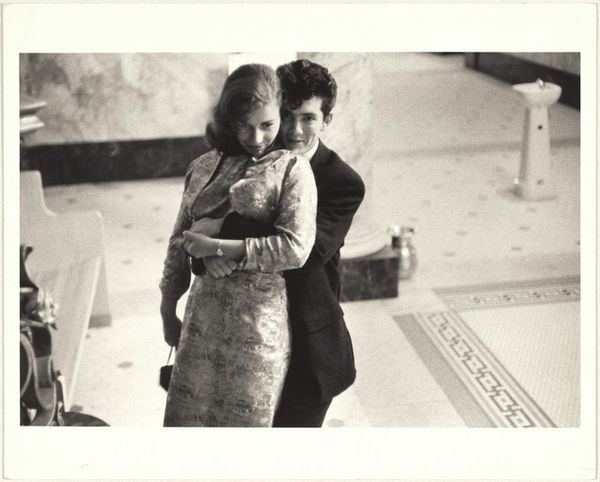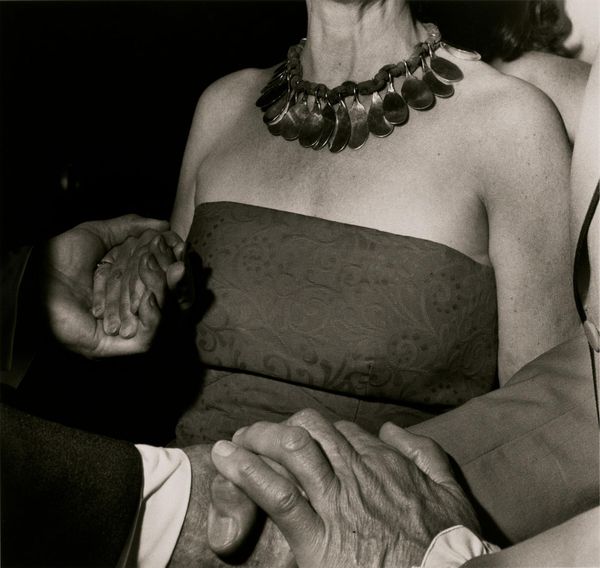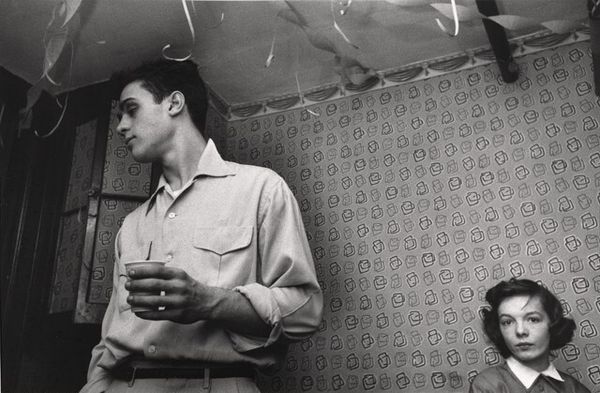
Dimensions: image: 25.5 × 34.3 cm (10 1/16 × 13 1/2 in.) sheet: 27.9 × 35.5 cm (11 × 14 in.)
Copyright: National Gallery of Art: CC0 1.0
Curator: Well, hello! Here we have Robert Frank’s “Untitled (Couple),” a gelatin-silver print from around 1958. I’m immediately struck by how incredibly… smoky it feels, even though it’s just a still photograph. Like I can almost smell the stale air of a dimly lit bar. Editor: Right. The tonal range is fascinating. There's a real dance between the deep blacks and the glowing highlights. It suggests to me a gritty, almost journalistic aesthetic, reminiscent of street photography where capturing the “decisive moment,” as Cartier-Bresson would say, was everything. We’re really seeing a process, here. The printing looks raw—intentional—pushing the boundaries of conventional photographic printing at that time. Curator: I get that—that raw intimacy is, I think, Frank's great gift. It isn’t overly composed or fussy, which actually gives it a monumental weight. I love how he’s caught the woman mid-laugh, or perhaps mid-sentence. It gives them so much vitality—so, even as a viewer, I'm included within their lively experience. Editor: Absolutely. We see two people clearly embedded within their context—sharing time and space. Let’s note how this contrasts to how celebrity portraits and studio work was made—a carefully posed arrangement under a photographer’s control. Frank seemingly relinquished a certain kind of authority; his labor was instead in documenting a reality as he observed it. This choice in process affects our reception—making us, the consumer of images, consider that decision. Curator: That's right, exactly, this seemingly off-the-cuff snapshot of two people really epitomizes the late 1950s and the counterculture moment on the horizon. Editor: In short, we have this very potent and gritty portrayal of American life made using gelatin-silver printing, a widespread method of image reproduction since its arrival in the late nineteenth century. And yet Frank takes something everyday and imbues it with an aura we now consider to be his distinctive vision. Curator: I agree. The longer I look, the more this one image seems to encapsulate so much of what was rumbling under the surface. Editor: Yes, precisely. Photography has the ability to really compress a narrative, doesn’t it?
Comments
No comments
Be the first to comment and join the conversation on the ultimate creative platform.
